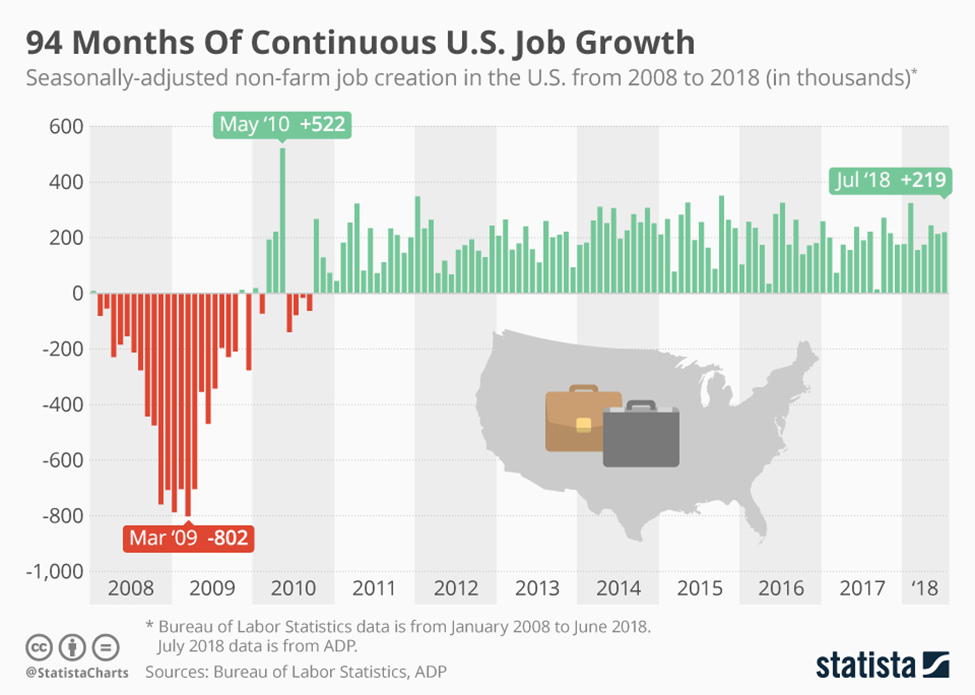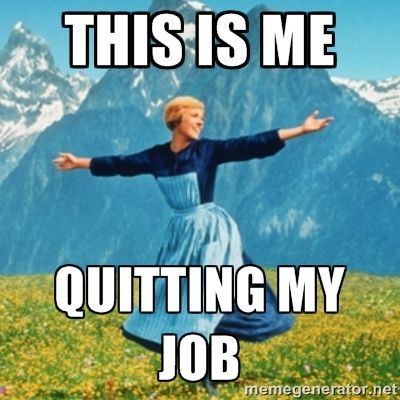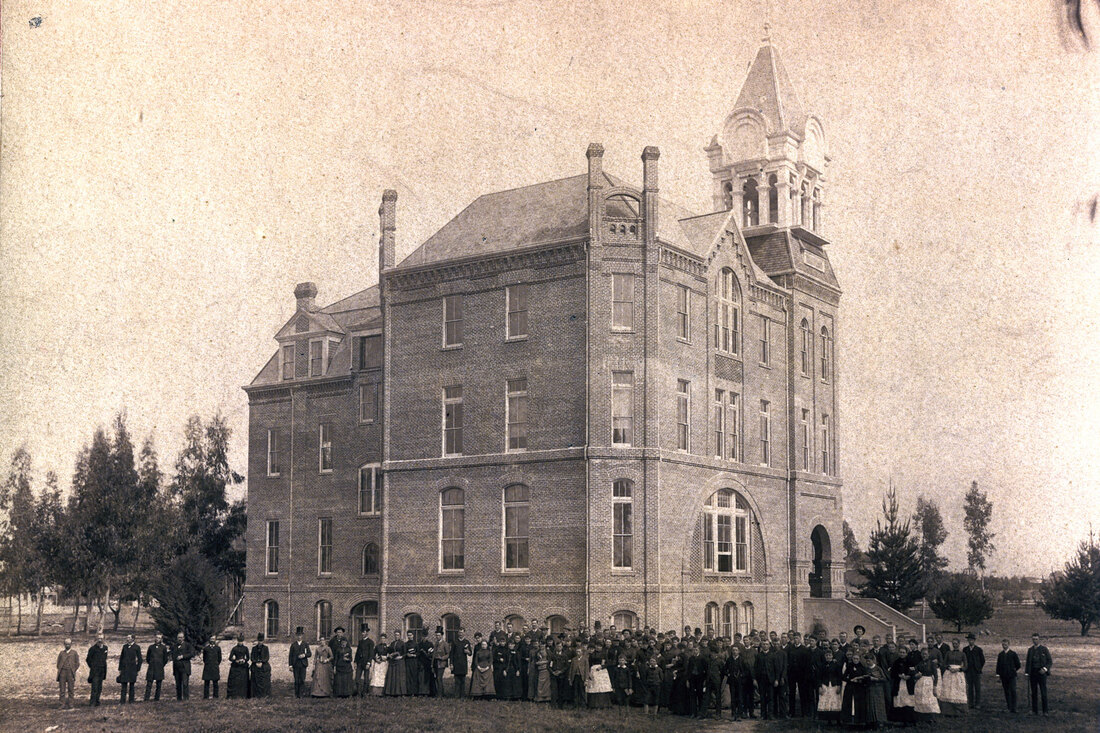|
The art of attracting talent! Nuvaira, Inc. CEO Dennis Wahr M.D. joins us on Medtech Snapshot to discuss strategies in attracting great talent into a small company, especially how to lure talent away from big businesses. Check out https://lnkd.in/gFwF9GYN for our past episodes of Medtech Snapshot. #medtech #news #strategy #talent #hiring #snapshot #podcast The quickest way to overcome a business challenge is to get help from those who are experienced in besting your beast! The team at Square-1 Engineering is comprised of a variety of technical and project management professionals who are subject matter experts in the areas of NPD, Quality, Compliance and Manufacturing Engineering. Learn more about how we can solve your work and project problems today to get you back on track! VISIT HERE
0 Comments
Orange County unemployment rate is 2.9 percent as of July, 2022, as such the talent scarcity is creating gaps between the supply and demand of skilled MedTech professionals. Given these challenges we’re all facing we recently asked the online community the following question:
Which part of your business has the hardest time finding and hiring talent? I suppose EU MDR is to blame for this as the majority of respondents indicated RA QA personnel are the hardest to find. There’s another distinction worth noting that’s adding fuel to the fire. The cost of living (COLA) in Orange County is 54% higher than the national average. As a result, this has a direct impact on the sheer number of people who can afford to live in OC, which decreases the size of the employment pool. Add into the mix issues the overall State is experiencing like a 250k net migration loss along with relatively new industry regulations like EU MDR and you have a perfect storm where demand is grossly outpacing supply. Pete Nalbach, GM of SeaSpine in Irvine, CA shared some interesting insights about the present hiring, employment and talent situation: Pete indicated and I’m paraphrasing a bit “…candidates have options. This means they only accept jobs they really want which in turn gets a higher engaged employee for the company in the long term” What’s your solution to the talent shortage? We’ve heard it a thousand times - the labor market is tight and only getting worse. Unemployment for professionals is close to an all-time low while demand continues to skyrocket. Frankly, this is nothing new, nor should this be news to most of us. What is rather striking are the number of companies who seem to have little plan in place for how they’re going to continue to hire new employees amidst one of the most competitive and challenging employment times in our nations’ history. Where plans lack, so do results. Long gone are the days where we can post a job online and get a slew of great applicants, especially in the technology sector. Why? Because everyone is working, which means those who aren’t, well there might be a reason for that. What this also tells us is in large part the people we all want to hire are gainfully employed elsewhere, to get their attention to come work for you you’ll need to have a plan in place to do so. Before we can build a hiring plan we first need to understand what we’re up against. Local Marketplace Dynamics – Orange County, CA: · Wages in OC are on average 17.3% higher than the national average and 21% higher than neighboring counties
If your organization is hiring now or in the near future, especially for technologists, I strongly recommend you consider the following hiring and company operational best practices as these will set up both your organization to attract and retain the best people. Remember, the ‘art of hiring’ isn’t a guessing game or round of blindfolded pin the tail on the doneky. People work where they feel appreciated, respected, and compensated appropriately so your organization needs to be able to demonstrate that and then operate accordingly. Hiring & Company Operations Best Practices:
I’ll admit some of the above items seem a bit over the top yet in the same breath I must also admit many of these things are becoming common place. It’s not to say you need to do them all, but to not offer any of these perks to current and or prospective employees means you may likely find yourself losing current employees to other companies who do have them, or not being able to hire at all. SHRM estimates the cost to backfill an existing employee is 6-9 months of their annualized salary. This offers a good moment of reflection – should you invest upfront (perks) or pay in the rears as you look to backfill and replace employees? Additional Best Practices:
To attract the best of the best we need to constantly review and optimize our strategies to ensure they are both keeping up with the current marketplace while producing the results we need. Remember, continuing to do the same thing over and over again yet expecting different results isn’t a good recipe for hiring success, it’s corporate insanity. Growth in hiring is typically a good thing. Why thank you Captain Obvious. While growth in hiring may very well be a good thing, successfully navigating the hiring process is an entirely different story.
Successful hiring can make or break the performance of a company. Unsuccessful hiring on the other hand creates all sorts of fun challenges for folks like you and me. In fact, Harvard Business Review identifies 80% of employee turnover is due to bad hiring decisions. What does this mean? First, let’s look at the potential tangible repercussions. According to Dice, one of the larger online job boards, a poor hiring decision for a candidate earning $100,000 per year could cost, on average, $250,000, and that expense comes right off the bottom line. That’s scary stuff! Basically, if the hiring decision you made ends poorly you can expect that mistake to represent 2.5 times the cost of whatever the salary is of the person you are hired. Rather than fearing the hiring process, or having it work against us, we should approach it with a strategic and open minded process to ensure success. Want to improve your hiring practices? Employee (pun intended) these 15 tips: 1. Why Would Someone Pick You/ Your Company? No longer is it realistic for employers to have the notion that just because you are in the drivers’ seat administering the interview means you have all the power. In fact, it’s quite the opposite as the current market is more in favor of the job seeker as they have plenty of options to choose from, you being one of them. If you want the best of the best you have to be able to speak to WHY people should consider you and your company. Your story must resonate with your interviewees. 2. Character Over Competency The best leaders use this philosophy – hire people who will bleed for your cause and will make the right decisions even in the darkest of hours. Competency in most jobs can be taught, character is what the person has developed well before you came around so don’t think you can change it easily, if at all 3. Behavioral Based Interviewing A great tactic while interviewing is to ask people what they would do in certain situations. This causes people to have to think and adjust in the moment. You aren’t trying to catch someone doing something wrong here, more or less understand their thought process and how they handle certain tasks or situations 4. Know What You Want Before You Interview All too often I hear people say, “we need to interview some people first to better understand who we are looking for”. You should never need to interview someone in order to help you understand who or what you are looking for. If you use this practice most often what it means is you don’t know what you’re doing from a leadership perspective. Tough love I know but it’s highly important you know what you want and need before you go looking for it during interviews. Wasting people’s time so you can figure out your direction with hiring isn’t advisable and it’s unprofessional. 5. Consult Others Before you go about the interview process speak with other managers about their experiences and your plans for your hiring process. The best advice typically comes from those who have been there and done it before that way you can learn from their successes and mistakes 6. Make Sure You Know And Understand Your Vision Somewhat similar to number #1 however this focuses on you and your specific team. Put yourself in the shoes of the person interviewing and think “Why would I want to work for her/ him?” “Does this vision excite me?” “What is my role in the future of this company?” 7. Best Foot Forward A helpful reminder if nothing else, remember when people are interviewing you are witnessing their ideal self, seeing them at their best. Asking questions which will give you better insight into who they are day-to-day, not just during your interview, are always good ways to get a better glimpse into who they are in a very day setting. 8. Tell Them Your Leadership Philosophy This is especially important if you are hiring the person to join your team. This is also very different than #6 which talks about the vision for your team or company. Here you are sharing with your interviewee how you lead and what you believe in. A great precursor question to this is asking the candidate what type of leadership they like and want in their next career 9. Interview Tests It’s a great practice to test candidates on their abilities on the spot, so long as the test is directly relatable to their core job function. If you are interviewing a Mechanical Engineer, for example, it is highly suggested you test them on the exact work they would be doing for you (ie Solidworks modeling) 10. The Reference Trick I personally think references are a waste of time. Why? Because the people on the other end of the phone are doing nothing but singing the praises of the person you are interviewing. In over a decade I can name on one hand the number of reference checks I’ve performed which brought about a poor review. Here’s how to get around it – when you are on the phone with the reference which was provided by your interviewee ask who else the interviewee worked with and then try to phone that person. This person won’t be prepared for your call and may provide you with more realistic insight into the persons’ work ethic and behaviors. 11. Put Yourself In Their Shoes Interviewing isn’t easy. In fact it can be downright terrifying for some people. Try looking beyond the interview. Just because someone’s interview isn’t a glowing success, or they may seem overly nervous, doesn’t mean they aren’t a good catch. Just because someone interviews well doesn’t mean they will perform well in the job. 12. Job Description = Performance Expectations It’s time we ditch the HR job descriptions and actually write and talk about what the newly hired employee will be expected to do from a performance perspective. If you’re hiring for sales, interview your candidates based on the quotas and metrics you’ll have in place. Ask how they will achieve those goals, what their strategies will be, etc. 13. Know Your Non-Negotiables What are you not willing to tolerate? When I’m in a position of hiring my two non-negotiables are attitude and integrity because both of these are things we have 100% control over. Knowing that I then ask questions around those two to see how they view my perspective on my non-negotiables. Asking interviewees their non-negotiables will also give you an idea of where their priorities land 14. Challenge Your Own Mindset One of the most common mistakes leaders make when hiring is they select candidates that remind them of themselves or select candidates that are beneath them skill wise. Great leaders surround themselves with people who are not only competent but will challenge the leader to be better. 15. Don’t Hire If It Isn’t What You Want I hired an employee that was most of what I was looking for but through the interview I uncovered some things that were less than great. Up to this point I had interviewed so many people that I just decided to move forward with this particular candidate and did the whole ‘cross your fingers’ bit in hopes they would work out. From that experience I can tell you it is always better to not hire when in doubt than hire because you need to fill a spot. After more than a decade of hiring people on a daily basis I’ve seen a thing or two when it comes to good vs. bad practices relating to the process of hiring employees. During that time I’ve also made my fair share of mistakes in the people I’ve hired which offered up a plethora of learning opportunities. What I've learned over the years is that making a hiring mistake can be costly and most of the time it is the employers fault the hire doesn’t work out, not the new hire themselves. Hiring an employee is an interesting and vital part of business. Interesting in that the end result is bringing on a new person into your company with the idea that they will fulfill a role to help the company move forward. Vital, because hiring really is one of the most important activities a business can do outside of generating revenue. Without revenue streaming in there is no need for hiring and no company for that matter, which is why I’ve placed generating revenue a tier above hiring. The act of hiring is often whimsical and mythical in nature, like a unicorn. Everyone loves to say they’re great at interviewing as they enjoy saying “I know how to pick em”, or “I’m able to sniff out the best from the worst in five minutes”. I always enjoy a good chuckle when I hear comments like this because the reality is that these words often stand on hollow ground. While we love to think we’re great at the process of identifying, vetting and selecting the best people the facts tell a different story:
With stats like this you’d think companies would focus more on their hiring process and approach to improve this area of the business similarly to how they spend endless amounts of time and money on activities like kaizen events and lean initiatives in order to improve yields by a couple percentage points. In the end the numbers don’t lie as they tell us a sobering story – no one is perfect when it comes to hiring employees. However the quicker we build awareness around our actual performance in the area of hiring the quicker we can begin to improve it. Below are the ten (10) most common hiring mistakes made in business. As you read through these make a note of how frequent an offender you or your company is with each:
Key Take Away: The current job market is one of the most competitive hiring landscapes we’ve ever seen. Most of the people in the US workforce have never seen unemployment figures like we’re experiencing today. Orange County, CA unemployment rate in September 2019 was a staggering 2.9%. Meaning, 97.1% of people who are eligible and or able to work are in fact doing so. The numbers nationally don’t get much better, or in favor of the employer, as we’re experiencing 3.5% unemployment nationally. The last time the unemployment rate was this low was in 1969. What does this all mean – it’s a candidates market, not an employers market. Most, if not all, the good people and therefore candidates are gainfully employed. If you want to improve your chances of landing great employees to help grow your company you need to ensure your hiring practices are addressing and or solving the 10 hiring issues mentioned above. Action Item: If you or your company struggle to hire great people one of the best things you can do to correct it is to seek advice and an alternate viewpoint. Ask your employees why they were for your company, learn what matters to them most and why they stick around. Another way to gain insight is to bring in an HR or recruiting consultant to review your current processes. Outsiders can often times see things quicker and easier than you can as they aren’t coming from a lens that is within the company. Their outsider perspective can provide unbiased feedback on the things you need to do to attract better talent. I just got done reading ‘Elegant Warrior’ by Heather Hansen – finished it in an afternoon. I’m a slow reader, and one who gets distracted easily, for me to finish a book of any size in one afternoon is quite a feat. Once I got into Hansen’s stories from the courtroom and how they apply to real life I was amazed at how many of them I had experienced both in my professional and personal life. I couldn’t put the book down. As I read on I learned that I made a lot of the same mistakes Hansen has made in her own career, interestingly enough my learning lessons were very similar, just not in a courtroom thankfully. Doing the right thing at the right time while keeping your class, elegance and respect isn’t easy. Especially when you’re in a leadership role and everyone’s watching your every move. “Leadership is easy!” said no one ever. Why is it that leadership is so difficult and hard to master? Well, for starters it’s a role that is largely trial and error, skill learning in the moment on the job. That means a lot of what we know and learn over time about being a leader comes from mistakes and blunders people have made before us. We learn from watching others, Hansen’s ‘Elegant Warrior’ talks about this as well. My career with leadership was no different. At the age of 23 I found myself in my first ‘management’ role and was scared out of my mind. Notice I used the word ‘management’, not leadership. There’s a big difference in the two. The spark of a great leader is someone who acknowledges and accepts they don’t know it all and asks for help. Simple, yet incredibly difficult to put into practice. As the years went by and my leadership prowess developed, I began to grow more and more confidence in my ability to lead others, influence and develop those around me. Though my confidence grew, I found as time went on the challenges I was faced with grew in size and significance. Confidence, or an inflated level of confidence, can be a big black eye for managers as it can cause people to overlook basic ways of leading that should never go unattended. My father has always told me, “You come from the school of hard knocks, it’s in our family, so don’t fight it, just learn from it.” And learn I did… Looking back on my earlier years in leadership there were three incidences I encountered that go down as the biggest mistakes of my career. While they were indeed mistakes on my part, the learning lessons that came of these situations were priceless to my overall learning and education in the art of leadership. Mistake #1 - Hiring the Wrong People I was a couple years into my leadership role overseeing a technical division. We were growing and seeing some good success and needed to hire people to keep the growth curve climbing north. After interviewing a variety of candidates I became inpatient (a lifelong battle of mine) in that I had not found the ideal person to join our mob squad of high performers. Throughout the interview process there was one person, we’ll call him Negative Norm, who had most of the characteristics I was looking for however it was plain as day to see that he had a hug ego and it was all about what Negative Norm was going to get from us, not what he was going to bring to the team. With my lack of leadership experience leading my decision making I hired Negative Norm and did the ole ‘cross your fingers and hope for the best’ routine. Dang it! What a dumb mistake that was. I still cringe about that experience today even though it’s been years since it happened. Not only did Negative Norm come in and create all sorts of disruption to the great culture we had worked so hard to develop on the team over the years but he also soured one of my best employees. We end up firing Negative Norm six months into him joining our team, which probably cost our company a boat load of money in tangible and intangible costs, as well as gave me a disenfranchised team and culture. I then had to deal with a declining all-star on our team who had become transfixed with the notion, thanks to Negative Norm, that he was working too hard and didn’t feel like this was the right place for him. Prior to disruptive Negative Norm entering our team this all-star employee was the quintessential idea of what a great employee should be. Lesson #1 as a Result of Mistake #1 – if you can’t find the RIGHT person, don’t make a hiring decision at all. You’re better off waiting and being patient to find the right person rather than settle for someone who could really make a mess of what you’ve worked so hard to build. Mistake #2 – Not Dealing with Conflict Head-On Have you ever had two employees get into a WWF battle royale at your office? If you haven’t, pray you never have to deal with that because what I witnessed was a linguistics slug fest that would make even the strongest people shiver, or send HR running for the hills. Two employees, we’ll call them Jack and Mort, worked together constantly. Both were high performers with a lot of potential and equally disciplined when it came to their work ethic. Mort had an affinity for talking down to people and really making those around him feel awful at times. Sometimes it was intentional, other times it was a complete lack of awareness on how he was coming across to others. Point being, he had a nasty proclivity for making others feel bad which lead to all sorts of not so delightful challenges on the team. I was doing my best to deal with it and had thought we were making progress. One day Jack finally decided he had enough of Mort’s verbal shenanigans and after bantering back and forth unleashed a verbal assault, letting Mort have it. The may lay interrupted the entire office causing employees who were uninvolved to scuttle into corners near the water coolers to talk about the events. It was a rather big distraction if you catch what I’m throwing down here. What did I do? I took action immediately and called each employee into my office, one at a time, to get their side of the story so I could then come up with a solution to the issue. What do you know, their stories were completely different from one another. Shocking. After talking with a variety of people who were ‘expert witnesses’ and my two lovely employees, I finally deliberated on our course of action to move forward with and presented it Mort and Jack individually. Big mistake that was! While I still stand behind my course of action decision, even today, it wasn’t the decision that got me into hot water. It was the fact that I never brought BOTH Jack and Mort into a closed door office to hash out what had happened. Lesson #2 as a Result of Mistake #2 – If you are in the middle of a conflict resolution issue between two employees and their stories don’t add up the best thing to do is bring both of them into a closed door office and get to the bottom of it. When people are in front of the other person the issue exists between you’ll find that their recollection of what happened changes as they can’t embellish, finagle or distort the truth. You also then have a better opportunity, in this case Jack and Mort, of talking things through, with you the leader as the mediator guiding the conversion to a safe landing. Mistake #3 – Allowing Mediocrity Similar to mistake #1 however this one had a far bigger impact than what I expected. I had previously written about this particular mistake along with steps on how to deal with conflict resolution which can be accessed by clicking here. I had an employee, we’ll call him Dr. Evil, who loved to say all the right things yet his actions never amounted to his words. Dr. Evil would show up consistently late most mornings, would be up from his desk socializing often during the day and enjoyed a consistent ‘sick day’ every other week, typically on Mondays. Dr. Evil was a smart cookie. He knew how to play the game well enough to where he wasn’t on the firing guillotine but also wasn’t on the winners’ podium as a result of his work. Dr. Evil was mediocre. His work ethic was lack luster, his results were average at best and his participation on the team was, like old worn in wallpaper, almost unnoticeable. After finally building up the courage to put Dr. Evil on a performance plan, which ultimately led to his demise, I felt good about my ability to deal with him and ultimately get him off the team. Until an employee said this to me… “Wow, I’m shocked we fired Dr. Evil, that was long overdue. I was beginning to think he would be with us forever and I’d have to pick up the slack.” Ouch. That hurt. What hurt even worse was the employee that said this to me was my top performer! Lesson #3 as a Result of Mistake #3 – allowing mediocrity on any team is a killer in more ways than one. Not only does it broadcast that you as a leader aren’t willing to deal with underperformers, it also signals that your expectation for the team and culture of your company/ department, etc. are that of averages. Nothing special. No pixy dust. No special sauce. What’s worse is that the people who are routinely most impacted negatively by leaderships inability to deal with mediocrity are your top performers. When in doubt – move them out. Jim Collins, author of the book ‘From Good to Great’ says, “Get the right people on the bus and the wrong ones off otherwise it will begin to negatively impact the right ones.” Leadership is synonymous with making mistakes. It’s okay to make mistakes, people don’t expect leaders to be perfect, so long as the leader doesn’t try to act perfect. Owning ones mistake is a powerful move as it shows you are humble, honest and live realistically. What isn’t okay is to keep making the same mistake, not learning from them the first time around. Key Take Away: You’ll never be an expert at leading, it’s an evolving art form that takes practice, tons of patience and a willingness to listen. Learn from your mistakes and learn quickly. When in doubt, don’t make a hiring decision. You’re better off continuing the search for the right person rather than settling and doing the old ‘fingers crossed, let’s hope this works’ routine. Action Item: When dealing with conflict in the workplace it’s best if you’ve had experience with tough situations before they occur. Lot’s of time the result of a conflict at the office has a lot to do with how management handles it. If you’re cool, calm and collected you’ll stand a better chance of navigating through the conflict and coming out the other side feeling good about the situation and your involvement. Practice ahead of time! Get a buddy or a colleague and role play difference conflict resolution scenarios. Try being both he employer and the person in leadership. Mix up the scenarios and really test your ability to be patient, ask great questions and most of all LISTEN. Practice will help immensely with how you deal with future situations. There’s one thing which has a direct impact to the success a business experiences throughout the year – hiring. Do it right, you’ll probably have a good year. Do it wrong, well, let’s just say you’ll quickly find yourself heading down crap creek without a paddle. Hiring is an art and a science combine. It’s a tricky process, so much so Harvard Business Review cited 80% of employee turnover is due to bad hiring decisions. Failing to hire the right people can also have a big impact to the company’s financials. According to Dice, an online job board, poor hiring decisions for employees earning $100,000 annually lead to an average cost of $250,000. Basically, if the hiring decision you make ends poorly you can expect that mistake to represent 2.5 times the cost of whatever the salary of the person is you are hired. If they’re at an executive level the cost is even higher. Long and short, your ability to make the right hiring decisions in 2019 will be crucial to the success of your business, your fellow employees, your newly hired employees and your own career. Approaching the hiring process with a strategic game plan allows us to increase our chances of successful hiring exponentially while overcoming fears and apprehension along the way. Previously I had shared in another article 15 hiring tips to find the best employees. 15 is a lot, who’s got time for that many tips! Therefore, I’ve summarized it to the top 7 most tips you need to take into consideration when hiring. For the full article and descriptions of each of these tips click here. Looking to hire successfully in 2019 Follow these seven tips: 1. Know & Share Your WHY 2. Know What You Want Before You Interview 3. Know Your Non-Negotiables 4. Hire Character Over Competency 5. Share Your Leadership Philosophy 6. Ensure Your Interview Process & Collaborators Are Tight & Timely 7. Challenge Your Own Mindset It’s amazing to learn than an estimated 70% of companies don’t have a specific process they follow to ensure their hiring process is streamlined and effective. As a result HBR identified that 80% of turnover is due to poor hiring decisions which can be directly correlated to a lack of planning and consistent processes along the way. While this sounds scary, we do know what it takes to be successful in the hiring process. We know this because we can look at where company’s struggle in the hiring process and then use that information to improve our own processes. The eight reasons company’s struggle to hire great people are, in no particular order:
Key Takeaway: Be prepared to lead your hiring process with your company’s WHY and get a plan in place! Action Item: Craft a specific plan for your hiring process including what you need in a new employee. Get a couple key people involved, ensure they are trained on how to interview, while making sure everyone is on the same page with what the company needs in the new person before you start interviewing. Everyone should be interviewing using the same criteria and scoring. Decision making should be left up to one or two people, not a kumbaya group agreement. You read that right. For the first time in decades there are more jobs available than the actual number of people that are on unemployment. As of July 2018 there are 6.3 million people in the US on unemployed, the equivalent of 3.9%. Axios, an online media company, shared yesterday we’ve officially crossed the barrier of more jobs available than people suitable or ready to fill them. Our economy also continues to boom as we’re in the longest job growth period on record, now 94 straight months. How can this be? If the economy is doing so well and there are so many jobs available why is it we still have so many people unemployed and why aren’t those which are unemployed taking the available jobs? ANSWER: The American workforce is changing, changing in TWO BIG WAYS: 1. Sedentary Lifestyle: we’ve become a society of professional sitters. The average person now sits, yes – sits on their keister, upwards of 51 hours and 44 minutes a week. It’s such a dramatic change in our society and workforce that some are now calling ‘sitting’ the new cigarettes. We’ll leave the health aspect of sitting to another article. For younger generations this lifestyle is their only perspective on working and it’s beginning to have a significant impact on our economy as it’s changing the jobs they’re taking, or willing to consider. Jobs which are considered physically or mentally demanding aren’t at the top of the pecking order and those industries are having an incredibly difficult time getting new blood to join the ranks. (construction; farming; trucking; skilled trades like plumbers, electricians, mechanics; emergency services; law enforcement, etc.) The change to a seated society tells us something else. As a society we are moving away from a ‘do-it-yourself hands on’ society where we’re focused on production to a society of ‘creative typists’. The new skilled trade is programming, not plumbing. Today’s emerging workforce wants to be close to technology and feel good movements while being free of work which may be construed as physically or mentally taxing. Getting your hands dirty on the job is out, sitting inside with the AC and nap-pods is in! 2. The Skill-less Unemployable: No one likes to think that there are people out there which don’t have skills or aren’t employable, it’s un-American. Yet it is becoming an increasingly frightening reality. The second reason our workforce is changing is there are a growing number of unemployed workers that are finding themselves unable to take advantage of the volume of job opportunities on the market due to their skills or abilities becoming out dated. Out of date just like the baloney sandwich my mom used to make for my lunch in grade school. No one eats baloney sandwiches anymore, so if you didn’t adjust your skills with the growing times, moving to turkey or tofu, you got left behind. And left behind without even realizing it, holding a moldy, crappy sandwich (your skills) in the process. Those who are unemployed at present are largely in part just not employable. Of course, there is always the exception to this rule however the growing majority of people who are unemployed just don’t have current day marketable skills to function in an environment which increasingly demands technology proficiencies. With national unemployment rates under 4% it tells us that those who can work are working and those who can’t – well they’ll continue to experience hardships trying to find jobs in a marketplace that is increasingly unforgiving and more expecting of people’s capabilities. As a result, the gap continues to widen whereas those who have been unemployed for some time trying to find work will continue to experience much of the same. The stigma attached to unemployment, the longer you’ve been out of work the more likely it is you will remain out of work, is a harsh reality for those unemployed. With so much opportunity to be had in the marketplace people who are unemployed for longer than a month or so find themselves having to develop colorful explanations as to why they weren’t working to hopefully appease prospective employers. Is the grass always greener on the other side? We quit our jobs with the idea of leaving for green pastures only to find out that the new job we just landed is just as bad if not worse than the last. Yikes! Why does this happen? Simply, we made a decision without fully understanding the ‘why’ behind it. When we’re at a point in our careers where we’re considering leaving our employer typically one or more of the following is happening:
Sound familiar? These are the top five answers people share on why they resigned from their employer. When we’re frustrated at work, especially if it has been going on a while, all too often we’re ready to jump ship without checking first if we have a life preserver on. The first opportunity that comes along meeting our ‘minimum qualifications’ can appear to be a god send. We yell out, “where have you been all my life” as we go through the interview process with our new prospective employer hoping they’ll give us the chance to say “Adios” to our current employer. But wait! How much research and investigation did we do ahead of time to ensure our hopeful new employer is better than the last? Does it meet our needs? Do we even know what our needs are? Here in lies the trap many of us fall into. We convince ourselves that what we have (our job or employer) is crap and anything else that presents itself is therefore exceptionally better than the last. We dive into the new opportunity to get away from the old to find ourselves quickly back into the same situation we were in before. How could this be? (it certainly isn’t our fault because it never is) Sorry to be the bearer of bad news – if you’ve experienced this it is indeed your fault. Now, let’s be fair, maybe no one ever taught you how to go about finding a new job and ensuring it met your needs. If that’s the case consider this first situation ‘my bad’ and moving forward use the following steps to better understand what you need and how to get it with a new job: Step #1: Self Reflection – take time to better understand where your unhappiness comes from. Without knowing this it will be very difficult to improve your situation Step #2: Honesty – are you giving your current job everything you can? If not then you’re putting yourself at risk of running from one issue to another, just at another company Step #3: List Your Expectations – write out a list of 5-10 things you want in a career and employer. Your top #1-3 should be non-negotiable no matter what Step #4: List of New Employers – if you’ve decided it’s time to move on build a list of companies in the area you want to work which meet your needs, at a minimum your non-negotiables. This information can be obtained by speaking with current employees of those companies or reading reviews online. Step #5: Network – this is the biggest misstep of all. Many times we don’t do this which means we aren’t getting a good enough perspective of what is going on within the industry we want to work in. Networking builds our connections and insight for businesses in the area we’re trying to find our next employment. It can also help us land a new gig. Step #6: Confirm Expectations – when you get to the point of interviewing with a new company make sure to ask them how they show up with the list of items you have created that are important to you. Ask every person you meet within the company. If their answers don’t jive with your expectations this isn’t the right company for you. Step #7: Show Up – if you do decide to take a new job with a company that meets your new set of expectations it is imperative that you show up and give them everything you’ve got. 150%. During this time you should also be making mental notes to see if your new employer is in fact upholding their commitments to your expectations. Caution – when you’re new it is a 50/50 split of responsibility where both parties have to come to the table to make the employer/ employee relationship work. Don’t just sit back and expect your new employer to drool all over you and praise you without you showing up in the new job accordingly. Praise, respect and opportunity are earned – never given for free. Unhappy at your job? Looking for a new one? Before you act on it make sure you understand why you’re in your present situation before you get into a new one. Once you know what you want it will be much easier to find the right opportunity rather than the first opportunity. About the AuthorTravis Smith is the founder and managing director of Square-1 Engineering, a medical device consulting firm, providing end to end engineering and compliance services. He successfully served the life sciences marketplace in SoCal for over 15 years and has been recognized as a ‘40 Under 40’ honoree by the Greater Irvine Chamber of Commerce as a top leader in Orange County, CA. Categories
All
Archives
April 2024
|
Visit Square-1's
|
|














 RSS Feed
RSS Feed


